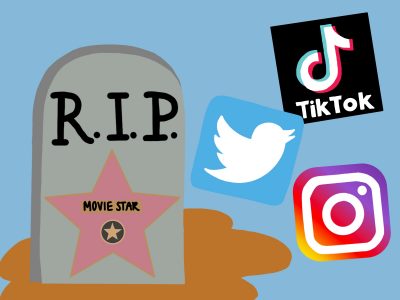Last week, a recent interview sent film Twitter into a frenzy.
On the “2 Bears, 1 Cave” podcast, Quentin Tarantino spoke of the “Marvel-ization of Hollywood.” He commented that in the current state of the film industry, actors become famous from playing Marvel characters, but the “movie star” title now belongs to the superhero characters themselves.

Some people defended Tarantino’s statements. Others, like Marvel actor Simu Liu, protested — citing examples of current movie stars and defending Marvel as merely a popular company.
Amidst this argument, two questions came to mind: What is a movie star? And how did it come to die in the past few decades?
First, the movie star must be defined. To me, a movie star is a singular leading actor or actress that has widespread, consistent popularity and generates a successful box office.
The movie star is an idea that originated within the old Hollywood studio system. A small group of five studios controlled the early film industry, including Paramount and Warner Bros.
They maintained their monopoly by means of vertical integration. Every aspect of a film, including theater distribution, production and casting was handled within the studio. Through this process, studios constructed a “star-making system” in which unknown civilians could enter the star-making cocoon and emerge successful.
In 1948, after years of protest from independent filmmakers and theater owners, the Supreme Court ruled against the studios in the case of “United States v. Paramount,” citing a violation of antitrust laws and effectively destroying these monopolies.
In this new independent topography, movie stars flourished and persisted. Stars like Charlie Chaplin, Paul Newman and Tom Cruise became the movie star ideal. However, all this changed with the emergence of two things: the internet and the Marvel Cinematic Universe.
With the birth of the internet came the idea of streaming in the mid-2000s, led by companies such as Youtube, Netflix and Hulu. This new reality of easy access to films and tv shows was extremely popular. People no longer needed to go to the theater to see movie stars perform. This led to a gradual decrease in theater attendance and ticket sales, as well as other means of potential secondary revenue like DVD sales.
Films suddenly became objects for consumption with no one around to digest. Forced to view films as a means to draw in “key audiences,” studios began utilizing algorithms and strategic marketing. In this new climate, it made more sense to produce guaranteed successes rather than dependending on one movie star to ensure hit movies. This is where Marvel comes in.
The enormous success of “Iron Man” in 2008 — grossing over $580 million — led to the birth of the MCU and an ever-expanding catalog of films and shows. Although Marvel — now owned by Disney — isn’t the first company to engage in franchising, it marked the superhero as a new commercial product upon which studios could rely.
Priorities shifted from the promotion of the movie star to the intellectual property itself. When the goal is to mass-entertain, it’s strategically unreliable to focus on the star behind the characters. Anyone can be Spiderman. In this promise, the dominion of the franchise grows larger as that of the movie star disappears.
Until 2021, Marvel contracts prevented many of these actors from leading other projects. Even when they do, people often don’t watch them. One example of this is Chris Hemsworth’s “In the Heart of the Sea,” which received 93.9 million at the box office with a budget of 100 million.
Without their characters, who are these stars to the average consumer?
The movie star is dead — a reflection of a changing landscape that’s become increasingly worrying to both actors and filmmakers alike.




















































































































